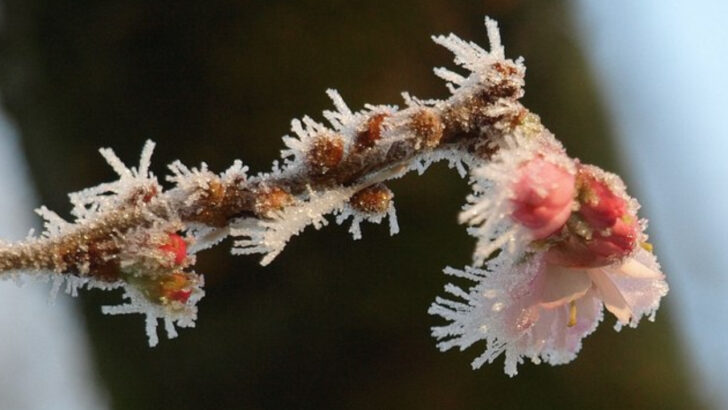If you’ve ever stepped into your garden after a cold night and wondered just how low the temperature dropped, a weather bucket might be the easiest way to find out. A video by Eco Endeavour teaches a really simple way to find out if your garden froze.
By leaving a bucket of water with a few branches in it, you create a natural temperature gauge. If the water is frozen in the morning, you’ll know that temperatures dipped below freezing. This trick is especially useful when you’re away and want to assess what conditions your garden endured while you were gone.
Why This Works as a Natural Thermometer
Water freezes at 32°F (0°C), so the presence of ice tells you that temperatures hit at least that low. The branches in the bucket serve as indicators—ice tends to form around them first, making it easier to see at a glance if freezing occurred.
This method works because water has a high specific heat capacity, meaning it takes longer to freeze than air. If the bucket froze, you can be sure that the surrounding environment was cold enough for long enough to impact your plants.
How This Helps Your Garden
Knowing if your garden experienced freezing conditions is valuable for protecting sensitive plants. Many crops, such as tomatoes, peppers, and basil, can’t survive a frost.
If you suspect a cold snap, you can take precautions like covering plants with frost cloths or moving potted plants indoors. If you return from a trip and see ice in the bucket, you’ll have a better idea of whether any damage to your plants was caused by cold exposure.
Additional Ways to Monitor Freezing Temps
While a weather bucket is a simple and effective method, you can also use other tools to track temperatures. A garden thermometer can give exact readings, and digital weather stations can record temperature fluctuations over time.
Some gardeners even use DIY frost alarms that trigger at certain temperatures. But for a no-tech, reliable option, a bucket of water remains one of the easiest ways to keep track of freezing conditions.
Read More:
Where to Find Gardening Inspiration During the Winter Months
A Simple Guide to Winter Sowing To Help You Jump-Start Your Seed Planting


